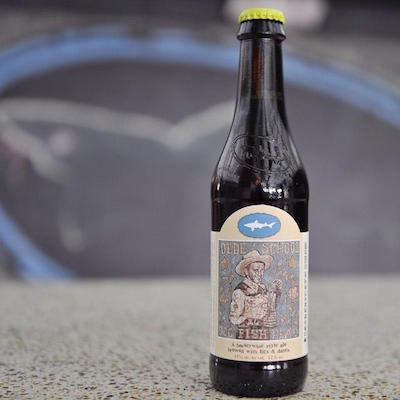5 Essential Barleywines for Winter
Photo by Dogfish Head
When it comes to barleywines, there are more questions than answers. It’s likely why few people actually drink them and, thus, why barleywines are one of the most under-appreciated styles of beer.
Let’s start with the name. Is it “barleywine” or is it “barley wine?” Why are the bottles often labeled as a, “barley wine style ale?” According to the Beer Judging Certification Program (BJCP), which offers style guidelines, so that they can judge a beer by those characteristics, it’s just one word. According to acclaimed beer writer Michael Jackson, it’s two.
“I don’t think there should be a militant single right way to spell it,” says Dogfish Head’s Sam Calagione.
Very few things are set in stone with regard to the style. Adnams Brewing (U.K.) head brewer Fergus Fitzgerald says his brewery has been making their barleywine, Tally Ho, since 1880. It was originally billed as a strong ale, but the name changed to barleywine in the 1960’s.
“I don’t know why we started calling it a barleywine,” he admits. “Probably it was a more fashionable name at the time than “strong ale.’”
There are two types of barleywines: American and English. To put it at it’s most reductive, the American versions of barleywines are super hoppy, but have an extreme malt backbone that gives it that high-ABV sweetness. The hops aren’t the star of the show, but they’re there in abundance; English-style barleywines are a more malt-forward beer, and many of them have caramel notes or a dark fruitiness. Both typically range anywhere from 8-12% ABV.
Barleywines tend to start appearing on the shelves in the winter months so that people who live in colder climates can drink them out of a snifter while frost cakes on the outside of their living room windows. They’re big beers and sharing them is helpful. There’s something about a big ABV beer, too, that encourages introspection and/or over-sharing to the person with whom you share that beer. Probably all that booze.
Barleywines will also age well. But as with aging any beer, you should drink one fresh first then experiment with the cellar. It’s as worthy an investment as a wine cellar, says Calagione.
“More and more beer and wine lovers are learning that barleywine can be an affordable luxury and great foundation to build a beer and wine cellar; World class barleywines are way cheaper than the world’s finest Bordeaux and yet they have the potential to age just as well,” he says.
Barleywines also tend to do well in barrels, according to Stone Brewing’s Steve Gonzales, who heads up the San Diego outfit’s barrel-aging program.
“I refer to Old Guardian [Stone’s version of an American barleywine] as the universal donor for barrels,” he says. “It is good in all types of barrels.”
Paste published a large blind tasting of 35 barleywines at the beginning of the year, but here we offer five classic examples of the style, both American and English, to help introduce you to the style.
Five Quintessential Barleywines
Dogfish Head Olde School
Milton, DE
15% ABV

This barleywine is labeled as an American version, but “it actually drinks more like an English barleywine in that it is more fruit forward than hop forward,” says Calagione, who adds that the beer is best after a year or two of aging.
-

-

-

-

-

-

-

-

-

-

-

-

-

-

-

-

-

-

-

-

-

-

-

-

-

-

-

-

-

-

-

-

-

-

-

-

-

-

-

-












































